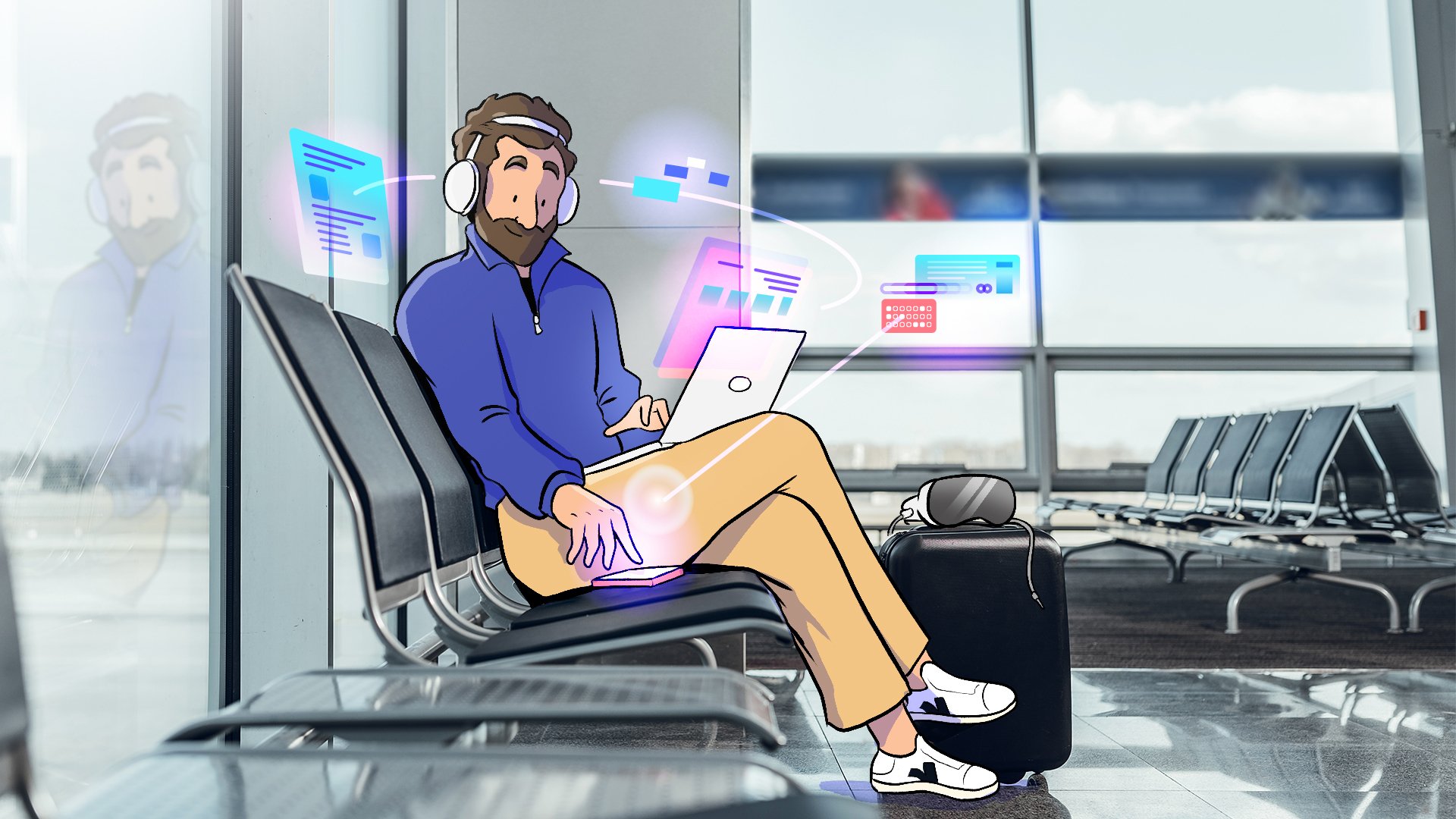AI has been quietly enhancing your work life for years

While it feels like everyone is calling 2023 the year of AI — and it’s often depicted as a harbinger of dramatic changes — the reality is that AI has been around for years, providing subtle-yet-significant enhancements to tools and services you use every day for work.
From the emails we send to the meetings we attend, AI is intricately woven into the fabric of our daily professional lives, often in ways we might not immediately recognize. Here are some ways you’ve already been using AI for work — probably without even realizing it — in some of the most popular products and services.
Google’s journey with AI
Google quietly started integrating AI into its platforms years ago — and continues to roll out new AI-based features across its suite of products each year.
Google Search
The integration of AI into Google’s search engine has been a long journey, beginning in 2001 with machine learning for spelling correction. Over the years, this integration has significantly evolved, making Google Search an intuitive assistant for navigating the vast expanse of the internet. Here are some of the ways AI has been implemented in search over the years:
– 2001: “Did you mean?” and Google Images – The introduction of “Did you mean?” marked one of the first uses of machine learning in Google Search, offering spelling corrections and enhancing search accuracy. This same year, the launch of Google Images revolutionized visual search.
– 2004: Autocomplete – This was a milestone in Google’s AI application as it predicted search queries as you began typing, reducing the time to complete a search.
– 2006: Google Translate – Initially supporting translations between Arabic and English, after four years in development, Google Translate has expanded to encompass over 100 languages.
– 2012: Knowledge Graph – This represented a significant step in utilizing AI to organize information about millions of subjects, providing quick snapshots of data about various topics through the Knowledge Panels you now see to the right of search results.
– 2018: BERT – The introduction of BERT (Bidirectional Encoder Representations from Transformers) was a significant advancement in understanding the context of words used in search queries, leading to more relevant search results.
– 2023: Search Generative Experience – Google is experimenting with using generative AI in search. Demos of the experimental tool show automatically generated results placed at the top of search using data from sites that would otherwise rank at the top of results, raising a multitude of questions about how the generated content is credited and how it will impact the sources from which Google draws. While it’s far from certain how significantly this will impact how users will search for information, it’s clear Google is factoring AI heavily into its future plans.
Gmail
Gmail’s predictive text features, Smart Reply and Smart Compose, launched in 2017 and 2018, respectively. The platform has continued to evolve, with AI-driven grammar suggestions now aiding in crafting more accurate emails. The Nudges feature reminds you to follow up or respond to important messages. Gmail’s AI also powers the Tabbed Inbox, sorting emails into categories like Primary, Promotions, and Social to streamline email management.
Meanwhile, Gmail’s AI spam detection algorithms work in the background to filter out unwanted messages, with the company saying last year that it blocks “more than 99.9 percent of spam, phishing, and malware from ever reaching users’ inboxes.”
Google Docs: Advanced AI Functionality
In 2019, Google released an update for Google Docs that uses AI to give grammar suggestions. It also uses the Smart Reply feature in comments, automatically suggesting relevant replies, and has auto-generated summaries to provide you with a quick overview of essential information.
Google Meet: Enhancing Virtual Interactions
Google Meet’s AI capabilities extend beyond basic video enhancements. Features such as background blur, automatic noise reduction, and autozoom improve overall video quality, making meetings more immersive and distraction-free. Its AI also improves “issues caused by low light, low-quality webcams, or poor network connectivity,” which the company says happens in the cloud, so your device’s performance isn’t impacted.
Duet AI in Google Workspace
Earlier this year, Google announced new generative AI-based features — including Duet AI, which works as a sort of collaboration partner, offering features like ‘Help me write’ in Docs and Gmail, ‘Help me visualize’ in Slides, and ‘Help me organize’ in Sheets. Google also plans to integrate it into Meet to automatically take notes during your meetings — or even attend for you so you never miss important discussions when another obligation arises.
Not too long after it was founded in 2003 as a social networking site for job seekers, LinkedIn started using AI to enhance the user experience. Its first integration of AI was 16 years ago, in 2007, with the People You May Know feature.
“AI is not new to LinkedIn,” Rohan Rajiv, LinkedIn’s Director of Product Development overseeing its job seeker products, told Mashable. “We’ve been an AI company for a while now. This technology is now the bedrock of our products and has been an integral part of how we deliver value to our members and customers and build trust in our systems.
“It’s also been in the background in how we help match candidates with companies or professionals with learning and skill building.”
LinkedIn announced at the start of November that it is expanding its AI offerings for paying subscribers, who can now get personalized insights and suggestions from its AI, including everything from performing mock interviews to adjusting their profile to give them the best chance at landing a job. LinkedIn’s AI was trained using all the data it’s accumulated over the years and using “data from Bing because, obviously, we have our friends at Microsoft, so we can pull search data from the internet,” Rajiv said.
Microsoft
Since 2016, Microsoft has been steadily integrating AI into many of its staple products, starting with PowerPoint. It then ramped up its efforts in 2017, with AI tools rolling out to more of the Office suite. Now, it’s using its generative AI tool, Copilot, to streamline your work processes further.
“At Microsoft, we have been infusing our productivity tools with AI for years,” Collette Stallbaumer, General Manager of Microsoft 365 & the Future of Work, told Mashable.
PowerPoint
In 2016, Microsoft introduced the Pen & Ink feature for PowerPoint, a tool that uses AI to convert handwritten notes into text — by 2019, 1 billion slides had been created with Pen & Ink. In 2017, Microsoft expanded the presentation software’s AI integrations with PowerPoint Designer, which automatically generates layouts and design ideas to simplify the slide-making process.
Word
Microsoft’s word processor also received AI upgrades in 2017 when the company rolled out its Editor and Researcher features. Editor uses AI to suggest spelling, grammar, and tone improvements; meanwhile, Researcher helps you find references you can use in your work without leaving your document.
Outlook
The year of the pandemic was a big one for Microsoft’s email platform, with 2020 seeing two major AI integrations added. The Editor feature for grammar and spelling was brought to Outlook alongside text predictions to save you time by completing your sentences.
Excel
Excel is a program primed for using AI, helping you be more efficient and your data more user-friendly. It has AI-based features such as Analyze Data, Recommended Charts, Pivot Table Recommendations, and Data Type Autodetection that help you streamline your data-input process and the presentation of your data.
Teams
Microsoft’s video conferencing platform, Teams, also benefitted from AI upgrades starting in 2020. This included features such as background noise suppression and video filters such as Together Mode, which makes it seem like everyone is together in person by placing them in a shared background. Microsoft also started using AI to enhance sound and video quality through features such as light optimization and echo cancellation.
In 2022, Teams received an AI-based live captions feature, available in 40 languages, alongside Intelligent Meeting Recap and Speaker Coach, which use AI to TK, respectively.
Copilot for Microsoft 365
In March this year, Microsoft announced that its generative AI tool Copilot will be coming to Microsoft 365 — the online version of its Office Suite.
Stallbaumer said that Copilot builds on the AI foundation that Microsoft has used for years, “enabling us to accelerate innovation using next-generation AI. Now, with just your words, you can design presentations, analyze data, and get through your inbox in a fraction of the time.”
